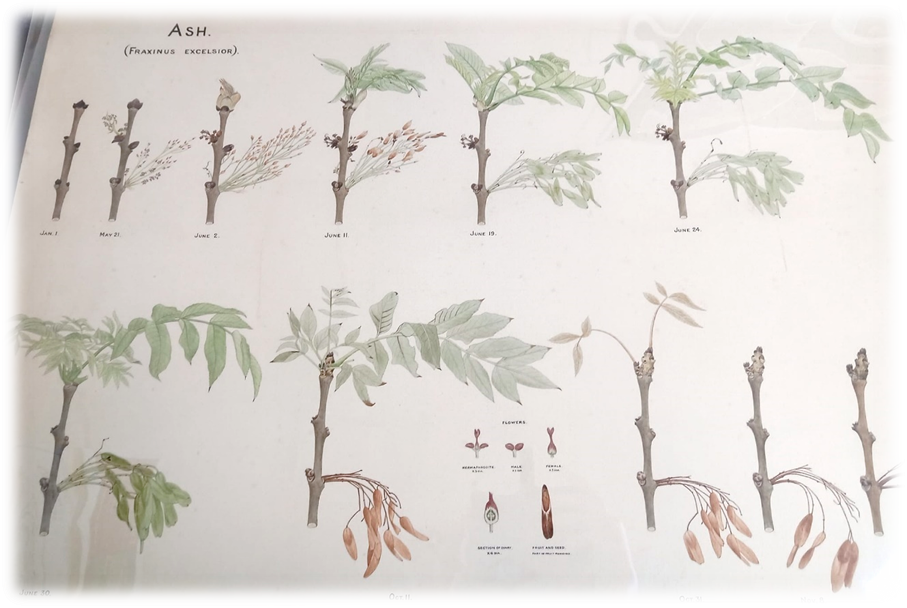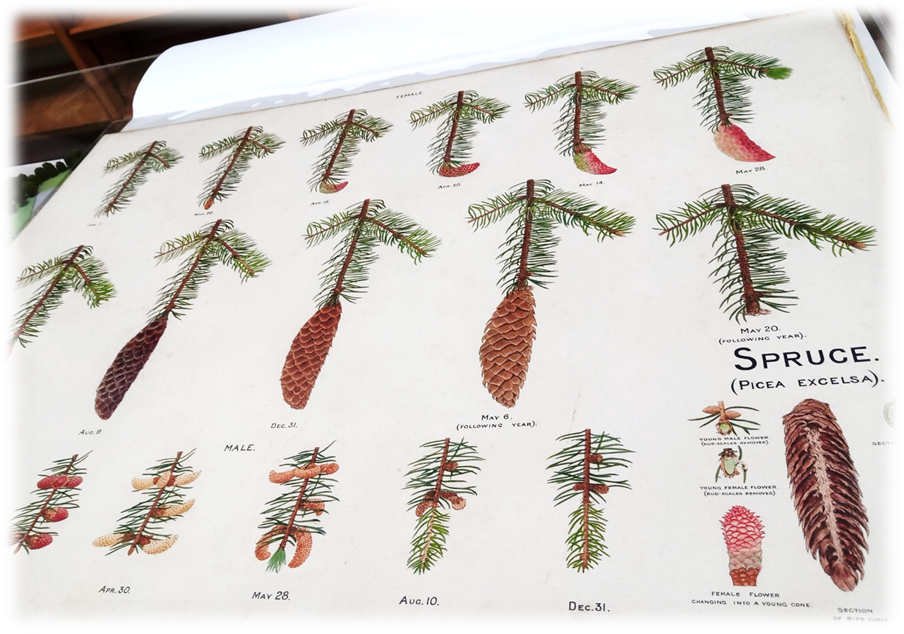“Flowers of the Forest” Twenty-Four Botanical Watercolour Paintings by John Patten, painted between 1906-1926
In April 1950 the artist John Patten donated to the Royal Agricultural College a series of watercolour illustrations of 28 different British forest tree species, from ash to yew. He included his descriptive notes[1] and accompanying correspondence, thereby offering a fascinating insight into his working methods.
He commenced the project in 1906 “as a spare-time job or rather hobby”. It took him nearly twenty years to complete the series which comprises twenty-eight tree species on twenty-four sheets of card-backed Whitman watercolour paper measuring 30” (762mm) x 22 (558cm).
Each painting consists of separate illustrations sketched and drawn at approximately monthly intervals, with representation of the developmental sequence of a single branch or twig. The hand-lettered sheets also have paintings of flower and fruit sections and floral diagrams.
Additionally, each sheet has a code in the bottom left corner depending on the process being used. These can probably be understood to represent: S for Sketching, D for Drawing, C for colouring and P for Printing (hand lettering). A figure for the total number of hours taken for each sheet is included.
John Patten was able to produce very accurate colours, and his green shades in particular have been described as ‘exceptional’. The level of detail, accuracy and precision in these paintings is quite remarkable.
Patten was nothing if not thorough in his preparation. As he describes in his notes:
At the beginning of the year certain trees were selected … and a piece of red tape was tied to a twig on each tree. The twig chosen was one likely to bear flowers and fruit later on. The red tape was used to identify the twig for future visits during the year [during which] it was accurately sketched and closely followed throughout the year.
In this way, Patten was able to capture moments of change such as the bursting of buds and the formation of fruit. He made his original sketches life-size on tracing paper, keeping detailed notes at each stage. Then during the winter months, he transferred these onto the drawing paper, before finally colouring them the following year, ensuring accuracy of colour by referring again to the actual tree sketched.
Some of the drawings were made at ground level, whilst others were made by standing on a branch some distance up a tree – the artist somehow sketching and holding on to the tree at the same time!
There was also the danger of coming down the tree quicker than one went up! Wind was the great enemy, as each gust blew the leaves about, and sometimes made the work impossible. On one occasion, when sketching the Spruce Fir, the sway at the top where the cones are was so violent that it caused an attack of sickness – a very unpleasant experience when one was about forty feet from the ground”.
Patten had to climb this particular tree thirty-one times! He also encountered other obstacles such as buzzing and biting insects, curious squirrels, and hands so cold that he struggled to hold the pencil.
As well County Durham, Patten also sketched trees in Northumberland, Lincolnshire, and North Wales. He went on to exhibit the paintings on a number of occasions in the 1920s and 1930s. His notes record that when shown at the Derby Royal Agricultural Show in 1921 His Majesty King George V ‘showed considerable interest in them’.
One cannot help but admire John Patten’s dedication to his art and his love for Britain’s forest trees. The Royal Agricultural University is delighted that the artist chose to donate them to this institution, and they remain a very valued part of our special (Archive) collections. We hope that you enjoy learning a little bit more about them.
[1] Flowers of the Forest: descriptions that accompany the drawings by John Patten, Chester-le-Street, Co. Durham











